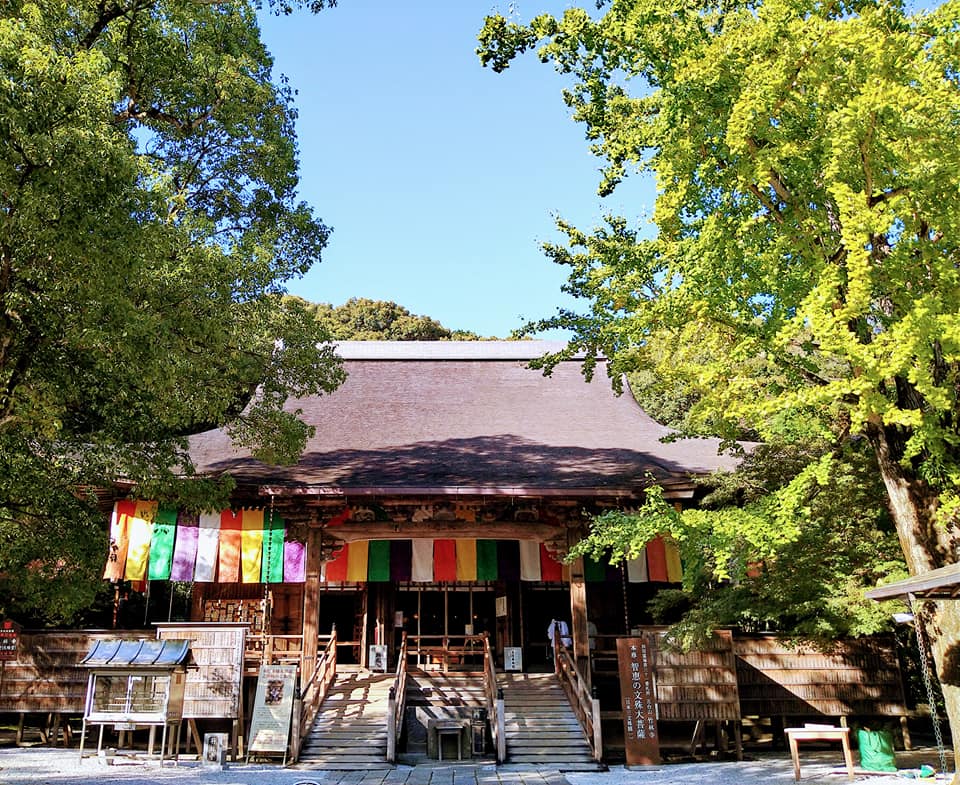A starter of Kanji, sir? Japanese 101: Basic Kanji
What is Kanji? Well, have you ever seen someone with a tattoo of some mysterious Japanese characters? There is a good chance that the characters are kanji characters.

What is Kanji? Well, have you ever seen someone with a tattoo of some mysterious Japanese characters? There is a good chance that the characters are kanji characters. So let's start this blog with a quick story when I found out I was going to Japan in 2017, I had the usual "learn as much as possible" moment that everyone has when they are going somewhere new. So while I was looking up tips, I always saw the tip "Learn Japanese". Now as an eager young gentleman, I sat down and looked for courses on Japanese. But this is where most people get scared off. Because at the time, there were courses offering lessons in one alphabet. One alphabet? What's so scary about that. Well, the Japanese uses three! Hiragana, Katakana, and Kanji.
Now before I continue this post, I want to recommend you learn Katakana and Hiragana together if you want to learn Japanese. Why? Because Hiragana is the main alphabet used in written Japanese, you need it to be able to put a sentence together. Katakana is used to represent foreign words that the Japanese language borrows. But before you start to panic there is a piece of good news, the sounds that the characters make are the same for both alphabets. So if you read my first language post "Itchy, knee, san? Japanese 101: numbers", the sounds of the vowels are the same. But this blog isn't about Katakana and Hiragana, so where does kanji come into this?
Well at the time, I was studying for exams so I decided I would learn some basics including basic ideograms (symbols that represents a whole meaning, idea or concept) for now. Now Kanji is the alphabet of ideograms. Therefore in normal day to day life, kanji are used on signs, door, posters, and in writing with Katakana and Hiragana. So if you don't want to be fluent in Japanese, learn some Kanji can be quite useful. Especially if you want to avoid walking into the wrong Onsen (hot spring) changing room.
Class in session!
So how many Kanji characters are there? 50,000. But don't worry, you don't need to know that many. A set of 2136 characters has been officially declared as the "kanji for everyday use". And most sources will tell you that you will need to know 2000 to 3000 characters to be able to understand newspapers. Quick history lesson: Kanji originally came from China (Kanji is known as Hànzì in China). But when the Japanese adopted Kanji into their language, an issue rose. If you take what the Chinese Hànzì means and applying it to the Japanese language, it is quite easy to work out what the meaning is but the issue is the sounds of the Chinese language and the Japanese language are very different. So to deal with this, the Japanese also adopted the Chinese readings for the kanji. But I will get back to this in a second.
So my plan for this post is to teach you the basic kanji characters that I used on my first ever trip. I should explain the structure of the blog a bit, most of the Kanji character sets that I have created include the kanji character, the meaning in English and the Japanese Onyomi (Readings derived from the Chinese pronunciations) or Kunyomi (The original, indigenous Japanese readings) readings and how I remember the character. A little warning, as Japan uses both the Chinese way and the Japanese way of reading kanji, I decided to use whichever one I use the most so please understand that it is another way of reading the kanji with Hiragana and Katakana. But the meaning of the Kanji characters will stay the same no matter what reading you use (unless you use them within more complex Kanji characters or with other characters).

Numbers
The first column might seem similar to whose have read my blog post "Itchy, knee, san? Japanese 101: numbers", as they are the kanji of 1-10. So how do you remember them? Well, 1 (一), 2 (二), 3 (三) are just lines or another way of remembering them is as logs. But what about the rest? Well, I remember them as:
4. A big square with “4” corners and two small squares in the top corners.
5. The number 5 with extra lines or the diving “ok” hand gesture.
6. A person who without their legs connected (there is a reason why the legs are key)
7. A “t”
8. A mountain peak (Mount Fuji)
9. Someone swinging their leg out
10. A cross
Nature

This set of Kanji are quite popular in day to day, not for their meanings but their usage in other words.

Hopefully, you can see some of the kanji as the meanings like how 火 looks like a fire. But there might be some that you can't see straight away so take some time to look over them. So what makes these characters so popular? Well, the days of the week.
- 月曜日 Getsu yōbi. Monday.
- 火曜日 Ka yōbi. Tuesday.
- 水曜日 Sui yōbi. Wednesday.
- 木曜日 Moku yōbi. Thursday.
- 金曜日 Kin yōbi. Friday.
- 土曜日 Do yōbi. Saturday.
- 日曜日 Nichi yōbi. Sunday.
I learnt these kanji characters quite quickly because, in the back streets where I live in Tokyo, there are tons of posters about which days are which recycling bin was being collected.
Animals

The idea behind this set is build on visualising images or hints based on the characters.


I struggle with some of these characters for a long time since some of them have similar radicals but they are useful for when you are looking for something like cat or dog café.
The human body/Relations

This set of Kanji characters are useful to learn as they are commonly used in more complex characters. For example, how the character 口 (mouth) is used in the character 名 for name.

Out of the whole set, you only really need to know three characters as a tourist which are 女 (Woman), 子 (Child) and 男 (Man). Because it is horrifying enough to walk into the wrong toilet in a country where you can speak the language, so even worse when you do the same in a country, where you can't speak the language. (If you do walk into the wrong toilet, expect someone to scream "Hentai" at you!). So if there is one thing you take away from this blog, it is those characters.
Directions

This set of kanji characters are key for when you want to enter and leave the great mazes of the Japanese metro system.

If you ever think, you won't get trapped in one of the many mazes that are part of what I call home, then let me tell you now that I know people that have been living in Tokyo for just over three years and they got lost in their local metro system (I don't blame them though, I still need a map for mine).
Actions

This set of characters will be useful when you are doing activity in Japan. They aren't a "must learn" but they have been useful in the past.

There is a trick character in this set which is gate (門). It should be the key terms kanji set but as you might have noticed it is radical in both to hear (聞) and to ask (問) so I felt like I should introduce it here.
Locations

Some of the kanji in this set you won't need if you are just visiting Japan but it is nice to be able to look at a map of an area and spot a university or a train station

The main purpose of this set is to introduce kanji characters that you might need for when you looking for specific tourist destinations like an onsen! Although there is a good chance that you will come across a couple of universities while exploring the Neon wonderland of Tokyo. The last time I checked, there were 142 universities (including colleges) in Tokyo. But before you point out Tokyo is a massive metropolis and therefore they should be spaced out, the apartment I live in is in walking distance of 5 of them.
Key terms

This set is designed around the idea of common kanji characters that you will find on signs around Japan.

Some characters might not be as useful as others. E.g. 刀 for sword. But they are fun kanji to know and who wouldn't be interested if they saw a sign saying Katana!!!
Time

When you couple kanji from this set with the kanji characters from the number set, you will able to work out times and dates.

One quick note on this, when you look for a time, expect to see 1,2,3,4,5,6,7,8,9,10, etc instead of the kanji form of the numbers as it is much easier for everyone. So it is unlikely for you to see a time/date given incomplete kanji character but if that does happen then you can pull the blog and find which kanji characters you are looking for
Conclusion:
In the last language blog I said "If I am honest, you don't need to learn all of these. I would say that for every phrase you remember, the benefits will be tenfold. If you coupled my first two Japanese 101 blogs with this one, you basically are ready to travel around Japan." And that still stands strong in my opinion. If anything, you are even more prepared to travel around Japan. Even if you only learn and remember one character, that better than none. One last thing, with my hints and how I remember the characters, take it with a grain of salt. You don't have to follow how I did, my advice is to visualise the character in what way you see them. If you use 出(exit) as two mountains and that is your reminder then do that! The hardest thing about this post as I was trying to find ways that I could explain my reminders in words, most of the characters I have learned and practised to the point where I can recall them from just memory. I am going to add this post over the next year or so, as my experiences and any feedback I get will change what I think is important in terms of basic Kanji characters.
So, it is time to say a big thank you to everyone reading this week's blog. In terms of next week, I haven't decided yet so we will have to wait and see. Also here is a link to a google form: https://forms.gle/oXEeLHD1XzfY5gkc6 Now I know it's an odd thing to add but it's for anyone with any questions as I am thinking about doing a Q&A blog in the future for a change of pace every once in a while. So, until next week, arigatou gozaimasu and sayōnara!
